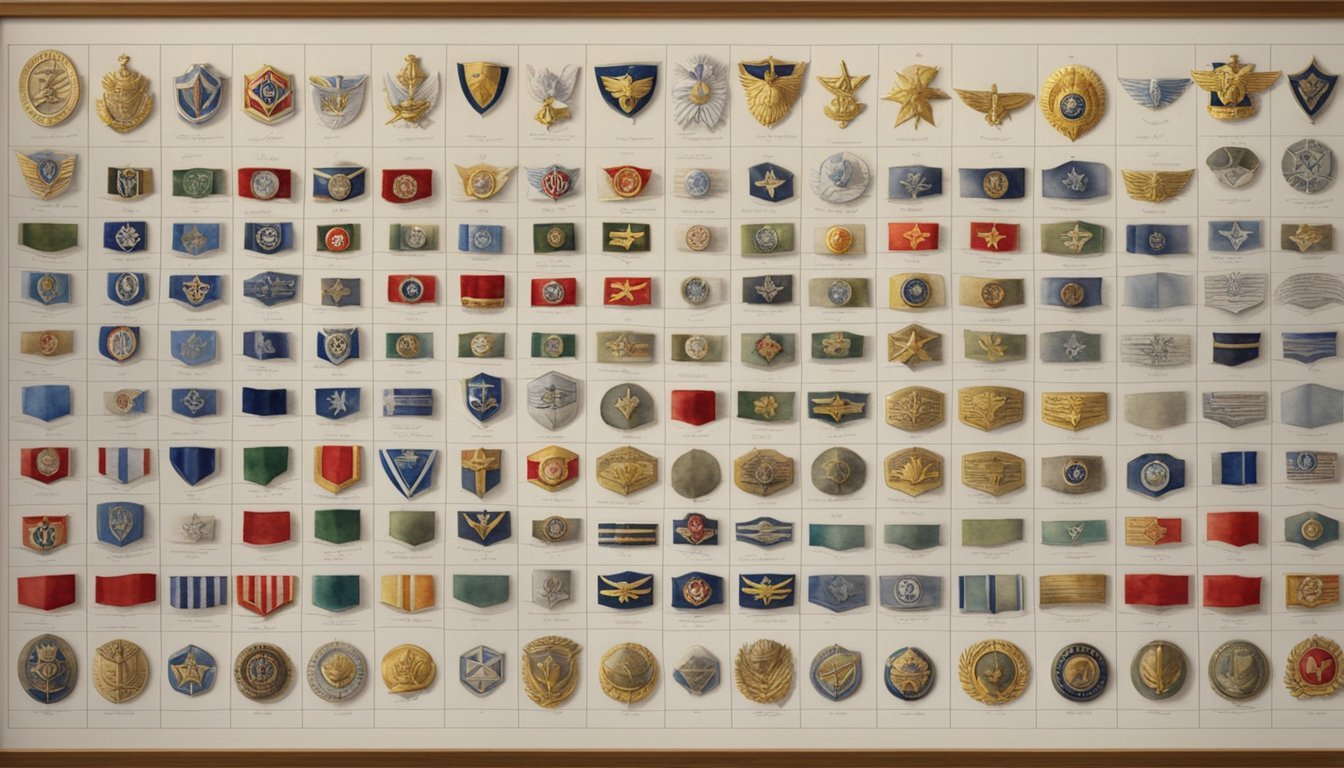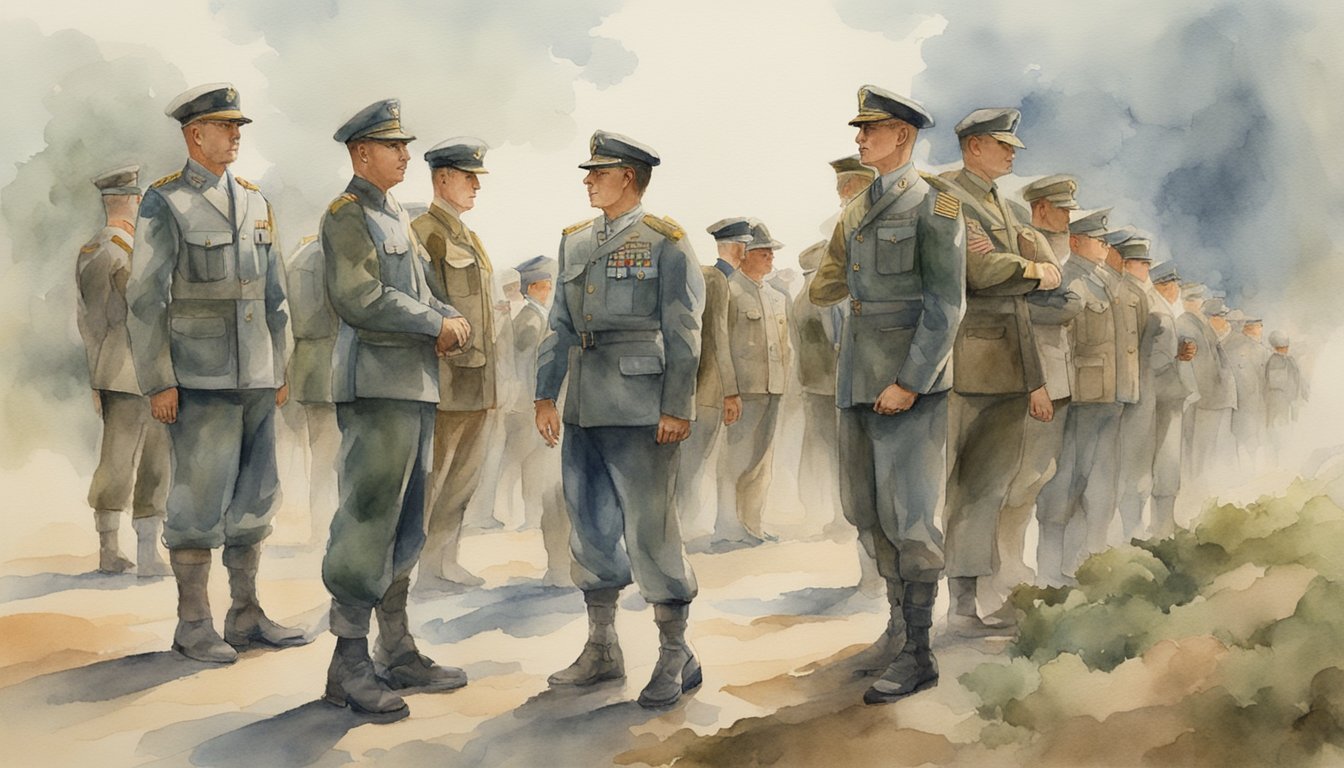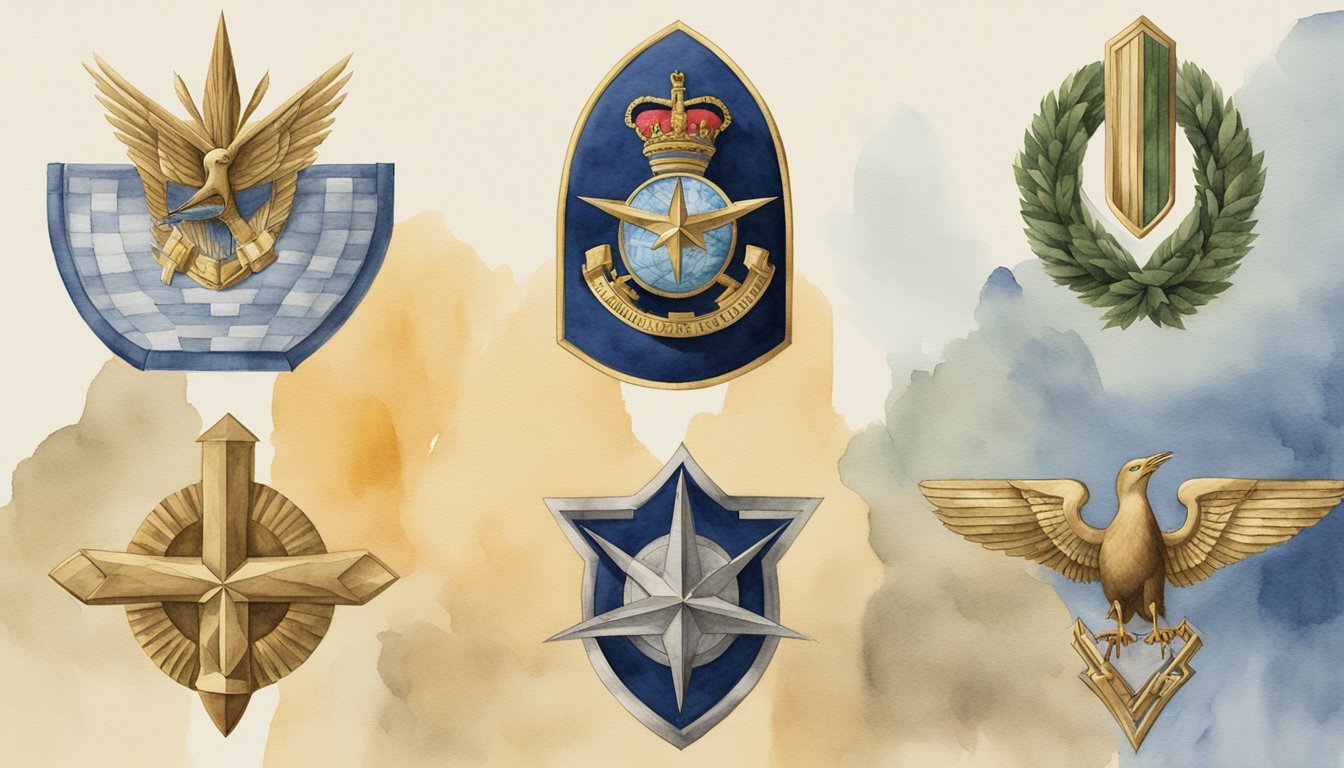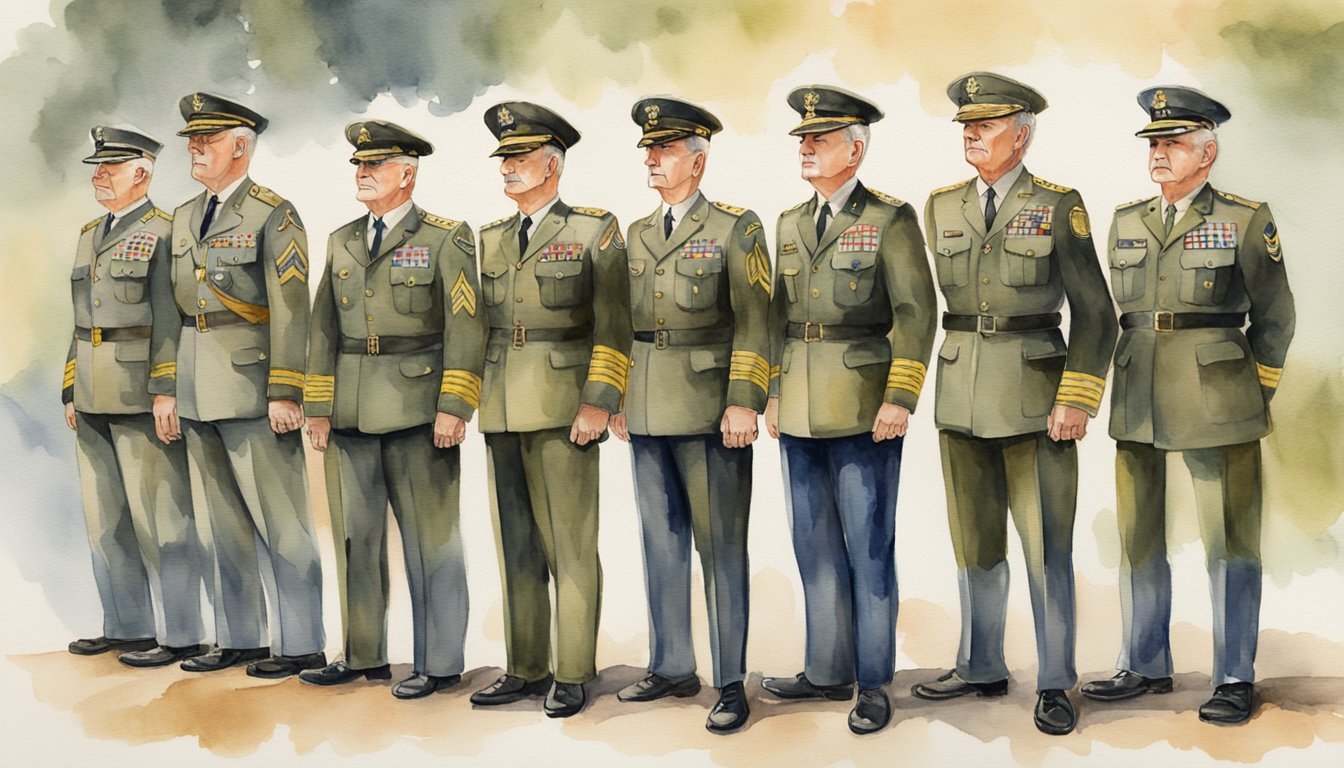US Military Ranks and Jobs Guide: Your Quick Breakdown

The United States military is vast, and understanding its ranks and jobs can be complex. This guide will break down the hierarchy and roles in simple terms, making it easier for you to understand how the military is structured and operates. Whether you’re curious about how enlisted ranks differ from officer ranks or want to know more about specific roles in the Army, Navy, Air Force, Marine Corps, and Coast Guard, this guide covers it all.

Enlisted ranks start from the lowest level, providing the essential workforce of the military.
Progressing through the ranks, these service members gain responsibility and leadership roles.
Officers, on the other hand, are leaders from the start, often with a college degree and specialized training.
Warrant officers are a unique class that bridges the gap between enlisted personnel and commissioned officers, bringing technical expertise and leadership.
By understanding the insignias and symbols of rank, you gain insight into the responsibilities and expectations of each role, offering a clearer picture of military careers and their paths.
Key Takeaways
- Military ranks and jobs vary from enlisted to officers to warrant officers.
- Each rank comes with different responsibilities and leadership roles.
- Insignias and symbols help identify rank and role within the military.
Overview of the US Military Ranks
In the U.S. military, ranks play a crucial role in defining leadership roles, responsibilities, and levels of expertise.
This section provides a clear understanding of the rank structure and how different service branches compare.
Understanding Military Rank Structure
The U.S. military rank structure is divided into enlisted ranks, warrant officer ranks, and officer ranks.
Enlisted ranks are the backbone, handling technical and tactical tasks.
They start from E-1, like Army Private, up to E-9, such as Army Sergeant Major.
Warrant officers are technical experts.
In the Army, they range from WO1 to CW5.
They hold ranks like Chief Warrant Officer.
Officers begin at O-1, such as Second Lieutenant in the Army, and go up to O-10, like General.
They are the leaders, making strategic decisions.
Each rank comes with specific insignia and pay grades.
For example, an Army Sergeant has three stripes, while a Captain has two silver bars.
Comparison of Service Branch Ranks
Each branch—Army, Navy, Air Force, and Marine Corps—has a unique rank structure.
In the Navy, the lowest rank is Seaman Recruit (E-1), while the highest is Fleet Admiral (O-10).
Navy ranks include different insignias, like anchors and stars on their sleeves and shoulders.
The Air Force has ranks similar to the Army but includes Airman ranks starting from Airman Basic (E-1) to Chief Master Sergeant (E-9).
Officers range from Second Lieutenant (O-1) to General (O-10).
The Marine Corps follows the Army closely, with enlisted ranks starting at Private (E-1) up to Sergeant Major (E-9).
Officers go from Second Lieutenant (O-1) to General (O-10).
Rank insignias and pay grades across these branches help maintain order and structure, ensuring everyone knows their role and where they fit within the military hierarchy.
For more detailed information on specific ranks within different branches, visit the U.S. Department of Defense website.
Enlisted Ranks and Responsibilities
In the U.S. Army, enlisted personnel play a crucial role.
Their ranks range from Private to Sergeant Major, and they take on various responsibilities that support military operations and leadership.
From Private to Sergeant Major
Enlisted ranks start at Private (E-1), where you begin basic combat training.
As you gain experience, you advance to Private First Class (E-3), taking on more tasks.
When you become a Corporal (E-4), you start getting NCO responsibilities, similar to what a Sergeant does.
In higher ranks like Staff Sergeant (E-6) and Sergeant First Class (E-7), leadership and training roles expand.
By the time you reach the higher echelon, Command Sergeant Major (E-9), you are involved in strategic decision-making and advising commanders.
The highest enlisted rank is the Sergeant Major of the Army, the principal advisor to the Army Chief of Staff.
Role of the Noncommissioned Officer
Noncommissioned Officers (NCOs) are key leaders in the military.
As a Sergeant (E-5), you’re responsible for a small unit, often handling training and discipline.
Moving up to Staff Sergeant (E-6), your tasks include more advanced training roles and larger unit leadership.
Sergeant First Class (E-7) and above serve as senior NCOs, taking on roles that require managing large groups and coordinating missions.
They also mentor junior officers and provide critical feedback to improve operations and strategies.
Command Sergeant Major and Sergeant Major of the Army represent the pinnacle of NCO leadership and influence within the Army.
Specialist Ranks Explained
The Specialist (E-4) rank is unique as it differs from the Corporal rank despite being at the same pay grade.
Specialists focus on technical skills and job-specific duties rather than leadership roles.
This distinction allows you to develop expertise in your field without the additional responsibilities that come with leading a team.
At this level, you play a vital role in supporting your unit’s mission with your specialized knowledge.
Specialists often assist senior personnel and cover areas that require a deeper understanding of specific Army functions.
This skill focus helps make the operational backbone of the enlisted workforce stronger and more effective.
Officer Ranks and Career Tracks
In the U.S. military, officer ranks signify command authority and leadership responsibilities.
This section helps you understand how to become a commissioned officer and what it takes to climb the ranks.
Becoming a Commissioned Officer
There are several routes to becoming a commissioned officer in the U.S. Army.
One common path is through the Army ROTC (Reserve Officers’ Training Corps) program.
This college-based training program prepares you for a leadership role.
Another path is attending the United States Military Academy at West Point.
Graduates receive a commission as a second lieutenant.
You can also join Officer Candidate School (OCS), a rigorous program that trains you to lead.
Warrant Officers receive their commissions through a different track and typically serve as specialists and technical experts.
Unlike traditional commissioned officers, their primary focus isn’t on unit command but on technical and tactical expertise.
Leadership and Advancement
As a commissioned officer, your career starts as a second lieutenant.
You typically command a platoon and take on more responsibilities as you gain experience.
Promotion to first lieutenant and then to captain follows, with added leadership roles.
Becoming a major or lieutenant colonel means you’re in field grade officer ranks, focusing on command and staff roles in larger units.
Promotion to colonel puts you in charge of regiments or brigades.
Moving up to general officer ranks (brigadier general, major general, lieutenant general, and general) involves high-level strategic leadership.
These roles are highly competitive and require extensive experience and proven leadership skills.
Advancement involves various factors, including time in service, training courses, and performance evaluations.
Command positions, staff roles, and specialist assignments will shape your career trajectory.
Warrant Officer Classifications
Warrant Officers in the U.S. military hold specialized technical roles and provide valuable expertise.
This section explores their specific duties and ranks.
Roles of Warrant Officers
Warrant Officers are crucial to the military due to their technical skills and leadership roles.
They often guide other soldiers and provide essential advice to commanders.
As a Warrant Officer, you’ll be expected to solve problems within your area of expertise, training both enlisted soldiers and commissioned officers.
You may find Warrant Officers commanding detachments, units, aircraft, and armored vehicles.
They play a vital role in operations due to their in-depth knowledge and years of experience.
These roles help maintain the Army’s operational readiness and technical capability.
Advancing through Warrant Officer Ranks
Advancement within the Warrant Officer ranks starts with Warrant Officer 1 (WO1) and goes up to Chief Warrant Officer 5 (CW5).
Each rank comes with its own set of responsibilities and leadership expectations.
Warrant Officer 1 (WO1) is the entry-level rank.
You need a high school diploma and you’ll typically be a technical expert.
Chief Warrant Officer 2 (CW2) to Chief Warrant Officer 5 (CW5) roles involve more responsibility and leadership.
CW2 and up are commissioned by the President and take the same oath as regular commissioned officers.
They command larger units and lead more complex missions.
As you advance, your duties expand from technical tasks to leadership roles, making decisions critical to the success of missions.
Branch-Specific Roles and Units

In the U.S. military, each branch has its unique structure and specialized roles.
These roles are designed to meet their specific missions and requirements, from ground combat to air operations.
Army Divisions and Specialties
The U.S. Army is organized into various divisions and specialties.
Each division is composed of several brigades, with each brigade containing multiple battalions and companies.
Key roles include infantry, cavalry, armor, and artillery.
Infantry soldiers are the backbone of the Army, engaging in direct combat.
Cavalry units are known for reconnaissance and mobility.
Armor units operate tanks and other heavy vehicles, while field artillery units provide fire support.
Marine Corps Units and MOS
The Marine Corps is known for its quick response time and expeditionary nature.
Units are organized into Marine Expeditionary Forces (MEF), which include ground combat, aviation, and logistics elements.
Your job in the Marines often depends on your MOS (Military Occupational Specialty).
For example, Marines in an infantry MOS focus on combat tactics and skills, while those in aviation MOS handle aircraft operations and maintenance.
Naval Operations and Specializations
The U.S. Navy operates both on the seas and under them, using various ships, submarines, and aircraft.
Naval units are divided into fleets, each responsible for a specific area of the world.
Specializations include surface warfare, submarine operations, and aviation.
Surface warfare officers manage ship operations and tactics.
Submarine officers control undersea missions, while naval aviators fly and maintain aircraft.
Air Force Squadrons and Careers
The Air Force focuses on air and space superiority.
Airmen are organized into squadrons, each with a different mission, such as fighter, bomber, or reconnaissance.
Careers range from pilots and navigators to cyber operations and maintenance.
Pilots often specialize in specific aircraft types like fighters or transport planes.
Cyber operators ensure the security of Air Force networks and technology.
Coast Guard Missions and Teams
The Coast Guard has a diverse set of missions, including search and rescue, maritime law enforcement, and environmental protection.
It operates under the Department of Homeland Security.
Coast Guard teams are organized into sectors and districts, each responsible for specific coastal areas.
Specialized teams include maritime safety and security teams (MSSTs), which handle anti-terrorism and port security, and Aids to Navigation Teams (ANTs), which maintain navigational aids.
Military Pay Structure

When you join the military, understanding your pay is essential.
Military pay is determined by rank, years of service, and additional allowances that help cover living expenses.
Understanding Basic Allowance for Subsistence
The Basic Allowance for Subsistence (BAS) is a non-taxable allowance.
It’s designed to help cover food costs for service members.
If you live on base, you might get meals provided in the dining facility, which can also affect your BAS rate.
Enlisted personnel and officers receive different BAS rates.
Typically, officers get a higher rate.
For instance, the 2024 BAS rate for enlisted members is about $452.56 per month, while officers receive around $311.68 monthly.
It’s important to know your entitlement since it helps manage your monthly budget.
Comparing Pay Across Ranks and Years of Service
Military pay increases with rank and years of service.
For example, an enlisted member at rank E-1 with less than two years of service will earn about $1,695 per month.
But, if you advance to E-6 with over ten years of service, your pay jumps to approximately $4,387.80 monthly.
Officers start with higher pay due to their positions.
A new officer (O-1) makes about $3,477.39 per month.
As you gain more years and move up in rank, your pay continues to increase.
Experience and rank play significant roles in determining your military pay.
For detailed information on pay charts, you can visit Army Pay Chart 2024 and 2024 Military Pay Charts.
Insignia and Symbols of Rank
Every branch of the U.S. military uses unique insignia and symbols to represent ranks.
These insignia help identify the level of leadership and responsibility held by soldiers, sailors, airmen, and marines.
Decoding Rank Insignia Across Branches
In the U.S. Army, rank insignia are often worn on the sleeves and collars. Enlisted soldiers have stripes, with more stripes indicating higher ranks.
For example, a Private has a single stripe, while a Master Sergeant has six.
In the Navy, sailors use different insignia on their uniforms. Officers wear shoulder boards and sleeve stripes. Admirals, the highest-ranking officers, have multiple stars on their shoulder boards.
The Air Force uses a similar system. Enlisted airmen wear chevrons on their sleeves.
The more chevrons, the higher the rank. First Sergeants have a diamond in the middle of their chevrons.
In the Marine Corps, rank insignia are worn on collars. Enlisted Marines have chevrons while officers wear bars, oak leaves, eagles, or stars.
A General in the Marines, for instance, is recognized by four stars.
These symbols are more than just decorations.
They signify one’s role and experience in the military.
Recognizing these can help you understand the chain of command and the responsibilities of each rank.
For further details, you can visit the U.S. Military Rank Insignia page.
Roles and Expectations of Senior Enlisted Service Members

Senior enlisted service members hold critical leadership positions in the military.
They mentor junior enlisted personnel, help manage daily operations, and ensure mission success.
Service-Wide Senior Enlisted Roles
In the military, roles like first sergeant, sergeant major, and command sergeant major are key.
These positions require a lot of responsibility and leadership.
For example, a first sergeant manages the health, welfare, and training of their unit.
They maintain discipline and ensure line-level coordination.
A sergeant major offers advice to commanders and oversees unit policies and procedures.
Meanwhile, the command sergeant major works at higher levels, often advising senior officers on enlisted matters.
The sergeant major of the army is a top enlisted advisor, representing enlisted views at the highest levels.
In the Air Force, the chief master sergeant and senior master sergeant hold similar roles, providing guidance and leadership to large groups.
In the Navy, the master chief petty officer and the master chief petty officer of the navy serve as senior enlisted advisors, focusing on policy implementation and personnel management.
The sergeant major of the marine corps and the chief master sergeant of the air force carry out equivalent duties in their respective branches.
Each senior enlisted rank is tasked with ensuring their team’s success, mentoring future leaders, and maintaining high standards across the board.
Training and Advancement in Military Careers
In the military, both training and career advancement are critical for developing skills and leadership.
Training prepares you for your duties, while advancement opens new career opportunities and roles.
Path to Enlistment and Officer Commissioning
To become an enlisted soldier, you start with basic training.
This is an intense program that teaches you physical fitness, discipline, and basic military skills.
Basic training varies by military branch but usually lasts around 10 weeks.
For those aiming to become officers, you’ll need to complete an officer commissioning program such as ROTC, Officer Candidate School (OCS), or a service academy.
Each path has specific requirements, including physical fitness tests, academic qualifications, and interviews.
Officers are trained to lead and take on greater responsibilities.
They often handle more complex duties, including strategic planning and mission management.
Career Development and Specialized Training
As you advance in your military career, ongoing training is essential.
For enlisted soldiers, promotions often depend on completing advanced individual training (AIT) or other specialized courses that focus on your Military Occupational Specialty (MOS).
For military officers, professional military education (PME) courses are mandatory.
These courses are designed to enhance your leadership skills and strategic thinking.
Noncommissioned officers (NCOs), who are the backbone of military leadership, also undergo specific training to prepare for roles in managing and mentoring junior soldiers.
Career development programs help you switch specialties or advance within your current field.
Various military branches offer their own sets of professional growth opportunities, ensuring you keep progressing and gaining new skills over time.
Historical Perspectives on Military Ranks
Military ranks have a long and varied history.
They date back to ancient times when armies needed a clear chain of command.
Throughout history, these ranks shaped how military operations were conducted and how armies were organized.
Revolutionary War
During the Revolutionary War, ranks were less formal than today.
Soldiers were sometimes appointed based on merit or popularity.
The Continental Army, led by General George Washington, adopted ranks similar to the British Army.
These ranks included Privates, Sergeants, and Captains.
Civil War Era
In the Civil War, both Union and Confederate armies used ranks to maintain order. Generals led large armies, while lower ranks like Lieutenants and Corporals managed smaller units.
Ranks helped in organizing troops and executing battle plans effectively.
World War II
World War II saw a complex system of ranks in the U.S. Army.
Enlisted ranks ranged from Private to Master Sergeant, while officer ranks stretched from Second Lieutenant to General of the Army.
The highest rank, General of the Army, was held by only four individuals, including General Dwight D. Eisenhower and General George Marshall, as detailed in this visual guide.
Modern Times
Today, military ranks remain a crucial part of the armed forces.
They create structure, ensure discipline, and clarify command lines.
From the entry-level Private to the high-ranking General, each role is essential for the efficient operation of the military.
Understanding these ranks helps you appreciate the organization and discipline within the military system.
Frequently Asked Questions
Understanding the rank structure and progression in the U.S. military is essential for anyone thinking of joining or interested in military careers.
This section covers common questions about ranks, roles, and salaries.
Can you break down the rank structure in the U.S. Army for me?
The U.S. Army rank structure includes enlisted soldiers, non-commissioned officers (NCOs), warrant officers, and commissioned officers.
Enlisted ranks range from Private to Sergeant Major.
NCOs hold leadership positions starting from Corporal.
Warrant officers are technical experts, and commissioned officers begin at Second Lieutenant and go up to General.
How do the military salaries match up with the ranks?
Military salaries, or pay grades, increase with rank.
An entry-level enlisted soldier, like a Private, earns less than a higher-ranked Sergeant.
Officers’ salaries start higher, with Second Lieutenants earning less than Colonels.
Pay also depends on years of service, special duty pay, and allowances for housing and other needs.
What’s the very top rank that you can achieve in the military?
The top rank in the U.S. Army is General, designated as a four-star general.
In wartime, a five-star General of the Army rank can be awarded but is very rare.
This rank is only given during major conflicts and holds the most authority within the Army.
Could you tell me the progression of ranks in the Navy?
In the Navy, ranks start with Seaman Recruit, advancing to Seaman, then to Petty Officer ranks, and up to Chief Petty Officer.
From there, you can advance to Senior Chief Petty Officer and Master Chief Petty Officer.
Officer ranks begin at Ensign and can rise to Admiral.
In what order do officer ranks go in the Army?
Army officer ranks begin with Second Lieutenant, advancing to First Lieutenant, and then Captain.
Next are Major, Lieutenant Colonel, and Colonel.
The highest ranks are Brigadier General, Major General, Lieutenant General, and finally General.
What’s considered the most prestigious role to hold in the military?
The most prestigious roles often depend on individual perspective.
Many consider the rank of General or Admiral to be prestigious due to the level of responsibility.
For others, leading special operations units or being awarded the Medal of Honor represents the pinnacle of military achievement.






